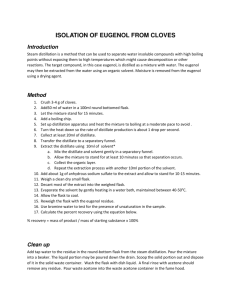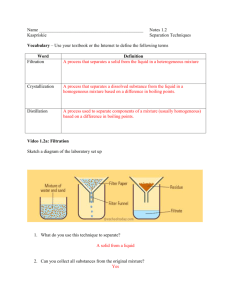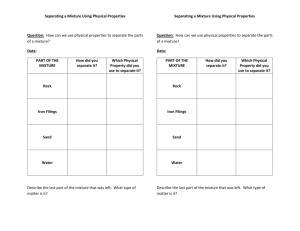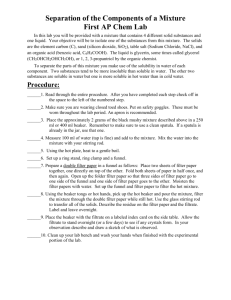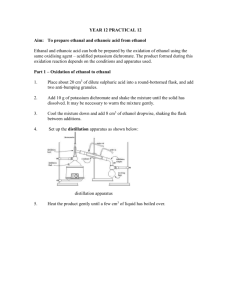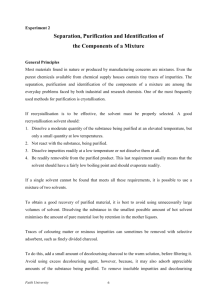Organic Chemistry Separation & Purification Lab Manual
advertisement
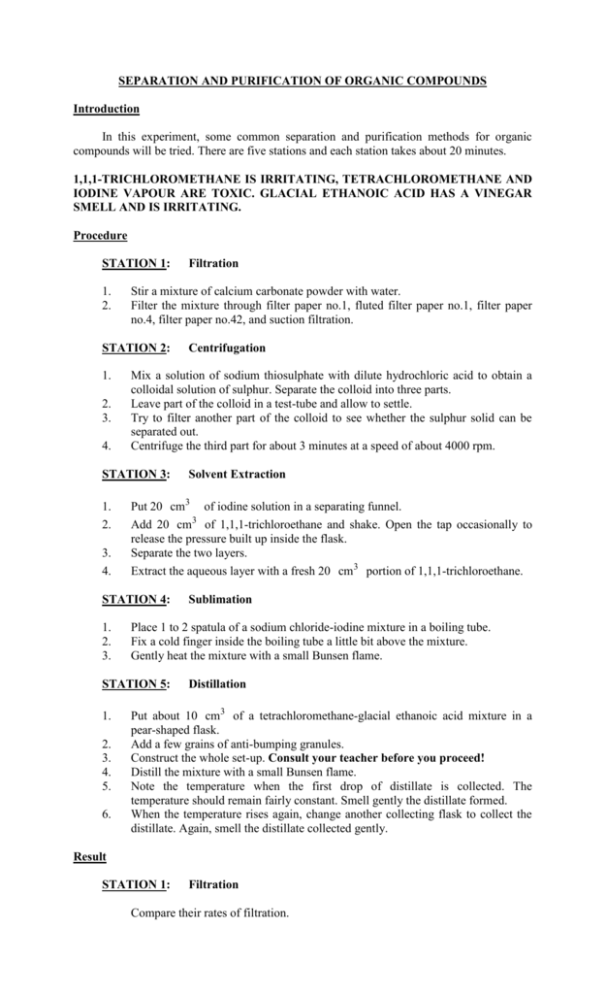
SEPARATION AND PURIFICATION OF ORGANIC COMPOUNDS Introduction In this experiment, some common separation and purification methods for organic compounds will be tried. There are five stations and each station takes about 20 minutes. 1,1,1-TRICHLOROMETHANE IS IRRITATING, TETRACHLOROMETHANE AND IODINE VAPOUR ARE TOXIC. GLACIAL ETHANOIC ACID HAS A VINEGAR SMELL AND IS IRRITATING. Procedure STATION 1: 1. 2. Stir a mixture of calcium carbonate powder with water. Filter the mixture through filter paper no.1, fluted filter paper no.1, filter paper no.4, filter paper no.42, and suction filtration. STATION 2: 1. 2. 3. 4. 3. 4. 2. 3. 4. 5. 6. Sublimation Place 1 to 2 spatula of a sodium chloride-iodine mixture in a boiling tube. Fix a cold finger inside the boiling tube a little bit above the mixture. Gently heat the mixture with a small Bunsen flame. STATION 5: 1. Solvent Extraction Put 20 cm3 of iodine solution in a separating funnel. Add 20 cm3 of 1,1,1-trichloroethane and shake. Open the tap occasionally to release the pressure built up inside the flask. Separate the two layers. Extract the aqueous layer with a fresh 20 cm3 portion of 1,1,1-trichloroethane. STATION 4: 1. 2. 3. Centrifugation Mix a solution of sodium thiosulphate with dilute hydrochloric acid to obtain a colloidal solution of sulphur. Separate the colloid into three parts. Leave part of the colloid in a test-tube and allow to settle. Try to filter another part of the colloid to see whether the sulphur solid can be separated out. Centrifuge the third part for about 3 minutes at a speed of about 4000 rpm. STATION 3: 1. 2. Filtration Distillation Put about 10 cm3 of a tetrachloromethane-glacial ethanoic acid mixture in a pear-shaped flask. Add a few grains of anti-bumping granules. Construct the whole set-up. Consult your teacher before you proceed! Distill the mixture with a small Bunsen flame. Note the temperature when the first drop of distillate is collected. The temperature should remain fairly constant. Smell gently the distillate formed. When the temperature rises again, change another collecting flask to collect the distillate. Again, smell the distillate collected gently. Result STATION 1: Filtration Compare their rates of filtration. STATION 2: Centrifugation Compare the efficiency of separation in the three cases. STATION 3: Solvent Extraction Compare the colour of the two portions of iodine in 1,1,1-trichloroethane. Note the colour of the aqueous solution after each extraction. STATION 4: Sublimation Give the observations during the separation. STATION 5: Distillation Report the temperature range on which the products are collected. Also, describe the smell of each portion.


